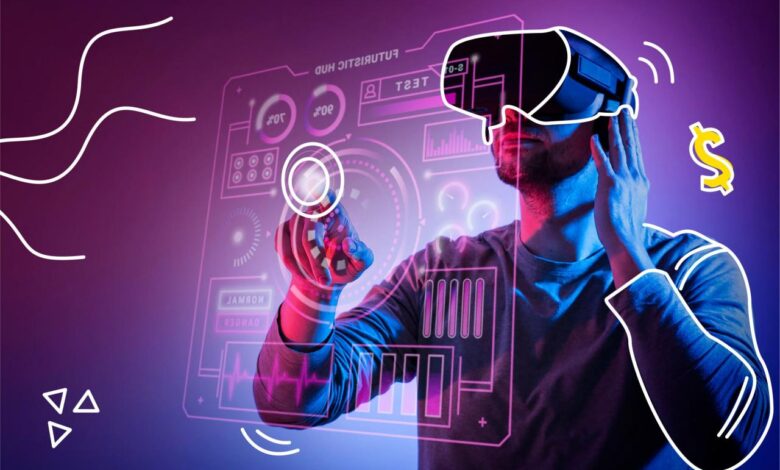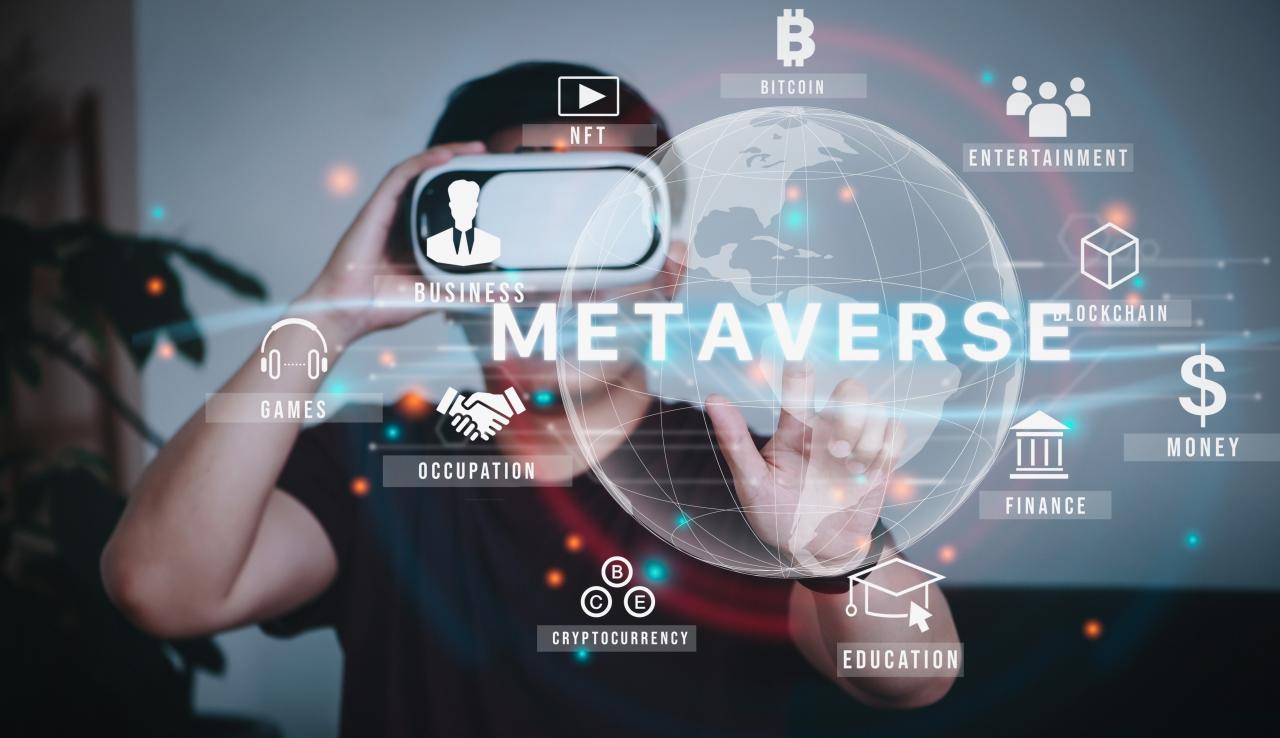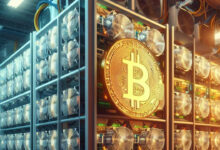The Metaverse Unveils Beyond Reality’s Next Frontier

The term “metaverse” has rapidly moved from the realm of science fiction to a central topic in technology. Far more than just a platform for virtual reality (VR) games, the metaverse is evolving into a complex, interconnected digital universe. It represents the next iteration of the internet—a persistent, shared, and immersive virtual world where users, represented by avatars, can interact with each other and with digital objects in real-time. This article will take a deep dive into the metaverse, exploring its core components, its applications beyond gaming, the technologies powering its growth, and the significant challenges and opportunities that lie ahead. The metaverse is not merely a destination for entertainment; it is a new frontier for work, commerce, education, and social connection.
Deconstructing the Metaverse

To truly understand the metaverse, we must look beyond a single platform or piece of hardware. It is a convergence of several key technological concepts and a fundamental shift in how we interact with the digital world.
A. The Core Components
The metaverse is built on several foundational pillars that distinguish it from the current internet.
- Persistence: Unlike a video game that ends when you log out, the metaverse is always on. The virtual world continues to exist, evolve, and change, even when you are not in it. This means changes made by one user are visible to others later, creating a shared, continuous experience.
- Real-Time Interactions: All activities and interactions in the metaverse happen in real-time. This includes communication, collaboration, and the physics of the virtual world. This low-latency environment is crucial for feeling a sense of presence and for seamless social and professional interactions.
- User-Generated Content (UGC): A significant portion of the metaverse is built by its users. From virtual homes and clothing to entire digital experiences, users have the tools to create and own digital assets. This democratized creativity is a major driver of innovation and community.
- Economic System: The metaverse is not a free-for-all. It has a functional economy where users can buy, sell, and trade digital goods and services, often using cryptocurrencies or virtual currencies. This allows for genuine value creation and a new kind of digital commerce.
B. The Layers of the Metaverse
The metaverse can be conceptualized as having distinct technological and conceptual layers.
- Infrastructure: This is the foundational layer, including the hardware (servers, networking equipment, cloud computing) that powers the virtual world. The advent of 5G, with its low latency and high bandwidth, and future networks is crucial for providing the seamless connections needed for a truly immersive experience.
- Interfaces: This includes the hardware we use to access the metaverse, such as VR headsets, augmented reality (AR) glasses, smartphones, and computers. The evolution of these interfaces is key to making the metaverse more immersive and accessible to a wider audience.
- Decentralization: This layer includes technologies like blockchain, cryptocurrencies, and non-fungible tokens (NFTs). These technologies enable true digital ownership, verifiable scarcity, and a decentralized economy that isn’t controlled by a single company. This is a critical departure from the current internet where large corporations own and control user data and assets.
- Spatial Computing: This is the fusion of the physical and digital worlds, powered by technologies like AR and VR. It allows users to overlay digital information onto their physical environment (AR) or to be fully immersed in a virtual one (VR). This creates new possibilities for interaction and information display.
The New Frontier
While gaming has been a natural starting point, the most profound impact of the metaverse will be in its applications outside of entertainment.
A. The Future of Work and Collaboration
The pandemic has already accelerated the shift to remote work, and the metaverse is poised to take this to the next level.
- Virtual Offices: Companies can create virtual offices where employees, represented by avatars, can “walk” into a meeting room, collaborate on a whiteboard, and have face-to-face conversations, all without being in the same physical location. This provides a sense of presence and spontaneous interaction that video calls often lack.
- Training and Simulation: The metaverse can be used for highly realistic and immersive training simulations. Surgeons can practice complex procedures, pilots can train for emergency situations, and factory workers can learn to operate new machinery in a safe, virtual environment.
- Design and Prototyping: Architects can walk through a virtual building before it’s constructed, engineers can collaborate on a digital twin of a new product, and fashion designers can create and showcase clothing in a virtual showroom. This reduces costs and accelerates the design process.
B. Redefining Education
The metaverse has the potential to make learning more engaging, interactive, and accessible than ever before.
- Immersive Learning: Students can explore ancient Rome, dissect a virtual frog, or travel to the surface of Mars, making abstract concepts tangible and memorable. This level of immersion can lead to a deeper understanding and higher retention rates.
- Global Classrooms: A student in Bali could attend a lecture by a professor at Harvard and collaborate on a project with a peer in Brazil, breaking down geographical barriers and democratizing access to quality education.
- Hands-on Training: Medical students can practice complex procedures on virtual patients, and mechanics can learn to repair an engine by working on a digital replica. This allows for risk-free, hands-on practice.
C. The New Era of Commerce and Retail
The metaverse is not just a place to buy digital goods; it is a new platform for commerce that blends the digital and physical worlds.
- Virtual Showrooms and Stores: Brands can create immersive virtual stores where customers can browse products, try on virtual clothing, and interact with a digital sales assistant. This offers a more engaging and personalized shopping experience than a flat website.
- Digital Goods and NFTs: The metaverse economy is driven by the sale of digital goods, from virtual land and real estate to clothing and art for avatars. NFTs, in particular, provide a way to establish verifiable ownership of these unique digital assets, creating a new market for digital creators and collectors.
- Brand Marketing and Engagement: Companies are using the metaverse to host virtual concerts, launch new products, and create immersive brand experiences that build a deeper connection with their audience.
The Technologies Powering the Future

The rapid evolution of the metaverse is not just a concept; it is being driven by significant technological advancements.
A. VR and AR Hardware
The development of lighter, more powerful, and more affordable VR headsets and AR glasses is crucial. These devices are the primary portals to the metaverse. As they become more comfortable and seamlessly integrated into our lives, they will drive mass adoption.
B. Artificial Intelligence
AI is the intelligence behind the metaverse. It will power the avatars of virtual assistants and NPCs (non-player characters), generate realistic virtual environments, and personalize the user experience. AI will also be essential for moderating content and ensuring a safe and inclusive environment.
C. Blockchain and Decentralization
Blockchain technology is fundamental to the metaverse. It provides a secure, transparent, and decentralized way to manage digital ownership and transactions. It also enables the creation of a trustless economy where users can transact directly with each other without the need for a central authority.
The Challenges and Opportunities
The journey to a fully realized metaverse is filled with both immense potential and significant hurdles.
A. Interoperability
Currently, most virtual worlds are walled gardens, meaning digital assets and avatars cannot be moved from one platform to another. For the metaverse to be a truly interconnected universe, a common set of standards and protocols for interoperability must be established. This is a major technical and business challenge.
B. Data Privacy and Security
The metaverse will collect an unprecedented amount of data about our interactions, behavior, and even biometric information. This raises serious concerns about data privacy, security, and potential misuse. Robust regulatory frameworks and a commitment to ethical design are essential.
C. The Digital Divide and Accessibility
As the metaverse becomes more central to our lives, a new “digital divide” could emerge between those who have access to the necessary hardware and high-speed internet and those who do not. Ensuring accessibility for people with disabilities is also a critical consideration.
D. Ethical and Societal Impact
The metaverse could have a profound impact on society, from blurring the lines between our virtual and physical identities to creating new forms of addiction and social isolation. These are complex issues that require careful consideration and proactive dialogue as the technology develops.
Conclusion
The metaverse is not just a futuristic buzzword; it represents a fundamental and transformative shift in how we will live, work, and interact. It is a new digital frontier that is expanding far beyond its initial applications in gaming, powered by the convergence of virtual and augmented reality, blockchain, and artificial intelligence. The ability to create persistent, shared virtual spaces is unlocking new possibilities for collaboration in the workplace, making education more engaging and accessible, and creating a new dimension for commerce and brand engagement. The rise of a decentralized, user-owned economy, driven by cryptocurrencies and NFTs, is a revolutionary departure from the centralized platforms of today’s internet, promising a future where users have true ownership and control over their digital assets.
However, as with any major technological shift, the path forward is complex and filled with significant challenges. Issues of interoperability, data privacy, and the digital divide must be addressed head-on to ensure that the metaverse is a truly open, secure, and equitable space for everyone. The ethical implications of a persistent, immersive digital world, from its potential impact on mental health to the blurring of our physical and virtual identities, require careful consideration and a proactive, collaborative approach from developers, policymakers, and society as a whole. Ultimately, the metaverse is not about escaping reality but about enhancing it, creating new opportunities for connection, creativity, and human ingenuity. It is a new canvas for human potential, and how we choose to build it will define the next chapter of our digital existence. The future of the internet is not just on a screen; it is all around us, waiting to be built.

